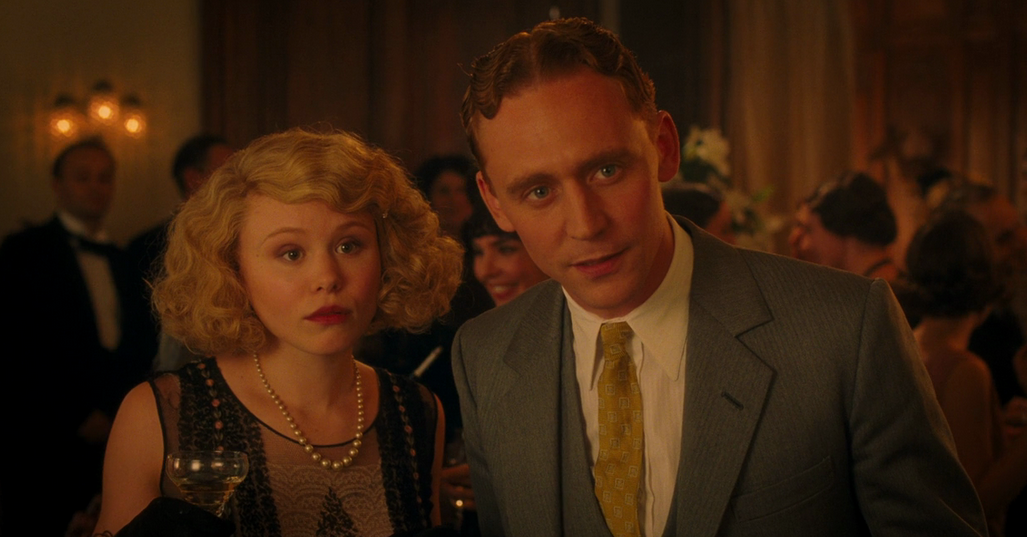
The Neurological Similarities Between Successful Writers And The Mentally Ill
They cannot focus on one thing quite like the average person. Essentially, their stream of ideas is always running -- the tap does not shut off -- and, as a result, creative people show schizophrenic, borderline manic-depressive tendencies.
Knowing his wife was upset with him for spending more time with his typewriter than with her, F. Scott Fitzgerald hatched a plan. He wasn’t proud of many of his short stories (he only included 46 of his 181 short stories in his published collections), but he knew that in order to win back his wife he’d have to whip up something quickly. Working from 7 a.m. to 2 a.m., he churned out “The Camel’s Back” for The Saturday Evening Post for a fee of $500. That very morning, he bought Zelda a gift with the money he had made.
“I suppose that of all the stories I have ever written this one cost me the least travail and perhaps gave me the most amusement,” he commented in the first edition of Tales of the Jazz Age. “As to the labor involved, it was written during one day in the city of New Orleans, with the express purpose of buying a platinum and diamond wristwatch which cost six hundred dollars.”
This was in 1920, and Zelda’s frustrations could still be assuaged with a well-timed gift. (After all, it was only after Scott had the money and prestige from publishing This Side of Paradise that she agreed to marry him earlier that year.) It wasn’t long though until Zelda had grown so fed up with Scott’s drinking and self-isolation that she lashed out, cheating on him with a French naval aviator while Scott was working on The Great Gatsby in the South of France. From then on, their marriage devolved into arguments and a devastating cocktail of debt, drink, and manic depression.
“Zelda’s spending sprees, her ‘passionate love of life’ and intense social relationships, her melancholic response to disappointment and the relatively late onset of her illness (she was born in 1900) point toward a mood disorder, as does the alternation between frank psychosis and a sparkling, provocative personality,” noted an older article in The New York Times Magazine that asked “How Crazy Was Zelda?”
The Fitzgeralds are perhaps the best — or at least the most intriguing — example of writers whose talents, when mixed with depression and vices (like alcohol and spending sprees), burned brightly then collapsed calamitously.
But of course, it’s not just the Fitzgeralds who battled depression and led lives that eventually spun out of their control. Mark Twain, Tennessee Williams, Sylvia Plath, Emily Dickinson, Stephen King, Anne Rice, David Foster Wallace, even J.K. Rowling are just a few of the writers who have been struck by the illness that Hemingway once referred to as “The Artist’s Reward.”
The common theory for why writers are often depressed is rather basic: writers think a lot and people who think a lot tend to be unhappy. Add to that long periods of isolation and the high levels of narcissism that draws someone to a career like writing, and it seems obvious why they might not be the happiest bunch.
Dig a little deeper though, and some interesting findings reveal themselves — findings not just about the neuroscience of writerly depression, but about why Hemingway was so awful to Hadley, why Scott and Zelda drove each other mad, and why writers, by and large, are not only depressed people but also awful lovers.
A few months back, Andreas Fink at the University of Graz in Austria found a relationship between the ability to come up with an idea and the inability to suppress the precuneus while thinking. The precuneus is the area of the brain that shows the highest levels of activation during times of rest and has been linked to self-consciousness and memory retrieval. It is an indicator of how much one ruminates or ponders oneself and one’s experiences.
For most people, this area of the brain only lights up at restful times when one is not focusing on work or even daily tasks. For writers and creatives, however, it seems to be constantly activated. Fink’s hypothesis is that the most creative people are continually making associations between the external world and their internal experiences and memories. They cannot focus on one thing quite like the average person. Essentially, their stream of ideas is always running — the tap does not shut off — and, as a result, creative people show schizophrenic, borderline manic-depressive tendencies. Really, that’s no hyperbole. Fink found that this inability to suppress the precuneus is seen most dominantly in two types of people: creatives and psychosis patients.
What’s perhaps most interesting is that this flood of thoughts and introspection is apparently vital to creative success. In Touched with Fire, a touchstone book on the relationship between “madness and creativity,” Kay Redfield Jamison, a psychiatry professor at Johns Hopkins, reported that successful individuals were eight times more likely as “regular people” to suffer from a serious depressive illness.
If you think about it though, this “mad success” makes sense. Great writing requires original thinking and clever reorganization of varied experiences and thoughts. Whether it’s Adam Gopnik’s first piece for The New Yorker that related Italian Renaissance art with the Montréal Expos or Fitzgerald trailblazing the “Jazz Age” with his combination of Princeton poems and socioeconomic class sensibilities in This Side of Paradise, a writer’s job is to reshape a hodgepodge of old ideas into brand new ones. By letting in as much information as possible, the brains of writers and artists can trawl through their abundance of odd thoughts and turn them into original, cohesive products.
It’s not a surprise then that Tim Burton, Quentin Tarantino, and the most wildly creative writers of our generation have such bizarre ideas: they cannot stop thinking, and whether pleasant or macabre, their thoughts (that can turn into masterpieces like The Nightmare Before Christmas and Pulp Fiction) are constantly flowing through their minds.
Although this stream of introspection and association allows for creative ideas, the downside is that people with “ruminative tendencies” are significantly more likely to become depressed, according to the late Yale psychologist Susan Nolen-Hoeksema. Constant reflection takes a toll. Writing, editing, and revising also requires are near obsession with self-criticism, the leading quality for depressed patients.
In fact, a study conducted by Nancy Andreasen at the prestigious Iowa Writers’ Workshop found that 80% of the residents displayed some form of depression.
“One of the most important qualities [of depression] is persistence,” said Andreasen. “Successful writers are like prizefighters who keep on getting hit but won’t go down. They’ll stick with it until it’s right.”
While Fitzgerald liked to boast of his raw talent that allowed him to come up with clever stories for the Post or The Smart Set in mere hours, biographers have noted that he spent months pouring over drafts — a perfectionist making revision after revision. For better or for worse, creativity and focus are inextricably linked. As Andreasen said, “This type of thinking is often inseparable from the suffering. If you’re at the cutting edge, then you’re going to bleed.”
This mishmash of unremitting rumination and self-criticism means that writers are always working. Even quotidian life is a writerly task. In an interview with The Paris Review, Joyce Carol Oates said, “[I] observe the qualities of people, overhearing snatches of conversations, noting people’s appearances, their clothes, and so forth. Walking and driving a car are part of my life as a writer, really.”
Now, for just a second, put aside the recent news that journalism/writing was ranked as the sixth most narcissistic job by Forbes. And don’t think about the fact that writing is not only a lonely job, but it is also one that can turn a pleasant walk or a drive into a form of work. Instead, focus on how writing is about being able to create and control a world.
For what is writing, but an amalgamation of our thoughts and experiences finished off with a wax and a shine?
This need for control often translates to real life too, and it comes at the expense of the feelings and wishes of nearly everyone around them. Writers are often such terrible lovers because they treat real people as characters, malleable and at their authorial will.
When Charles Dickens was 24 (and allegedly a virgin), he married Catherine Hogarth, then 21. Almost immediately after they married, he became infatuated with Mary, her younger sister (so much so that she would later become the basis for Little Nell in The Old Curiosity Shoppe). Mary died shortly thereafter, which proved a devastating blow for Charles, and for the rest of their marriage Catherine futility tried to live up to her sister. After 22 years and 10 children with Catherine, Charles met Nelly Ternan, a young actress, and deciding that he was quite tired of his wife, tossed her aside in favor of this new mistress.
Like so many authors, from Fyodor Dostoevsky to Ezra Pound to V.S. Naipaul, Dickens wasn’t much of a good person. In fact, he was a rather terrible person and had history not bowed at the beauty of his fiction, he would have been remembered poorly.
Writers can be rather awful people, and their blend of depression, isolation, and desire to control not only their own characters but the “characters” of their real lives has been a relationship-killer for centuries.
(As for the other relationship-destroyer — writers’ infamous penchant for alcohol — Gopnik postulates, “Writing is work in which the balance necessary to a sane life of physical and symbolic work has been wrested right out of plumb, or proportion, and alcohol is (wrongly) believed to rebalance it.”)
Trying to balance vice, borderline mental illness, and a disregard for the real world in favor of fictitious ones is perhaps a noble but Sisyphusian act for many writers. Try as they might, the greatest creatives in history have too much neuroscience working against them, too many ideas fluttering around their minds.
It would be cliché to quote Jack Kerouac in saying, “The only people for me are the mad ones, the ones who are mad to live, mad to talk, mad to be saved” — and yet it is a platitude for a reason. The most fascinating people in history, the ones who make a difference, who create, might be depressed, perhaps miserable romantics, yet they have contributed more to society than many of them ever knew.
In fact, Fitzgerald died thinking he was a failure. He was in Hollywood doing “hack work” while his wife was in a Swiss sanitarium, and he often felt as though he were holding the ashes of his life in his hands. Only 44 years old but looking weathered and much older, he sat in his armchair listening to Beethoven, scribbling in the Princeton Alumni Weekly and munching on a Hershey Bar. It was a wintery morning in 1940, and as if propelled by a ghost, he leapt from his chair, grasped at the mantle piece, and collapsed on the floor. He died from a heart attack.
Zelda was too ill to make it to her husband’s funeral, but only a few months before, she had written to Scott with surprising lucidity, “I love you anyway — even if there isn’t any me or any love or even any life — I love you.”
She knew that they were mad, that their creativity and vice and entirely unique perspective on the world would be both their greatest high and their most agonizing low. To the letter, she added, “Nothing could have survived our life.” ![]()










